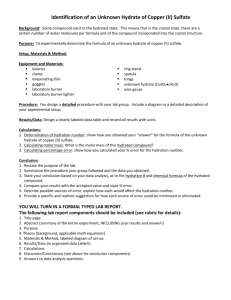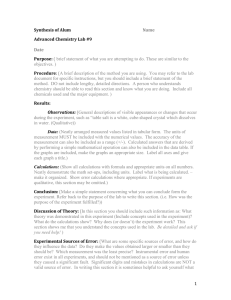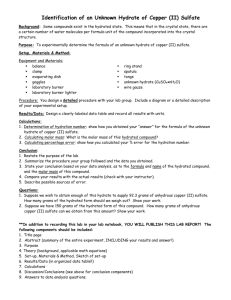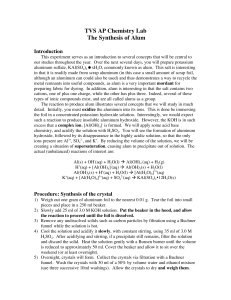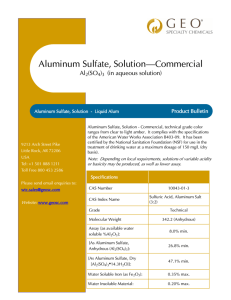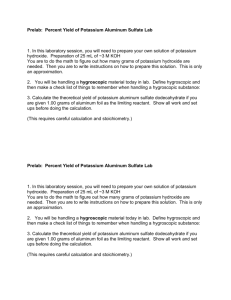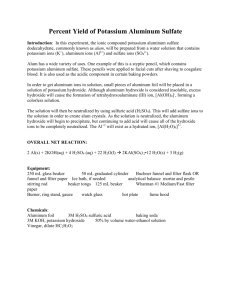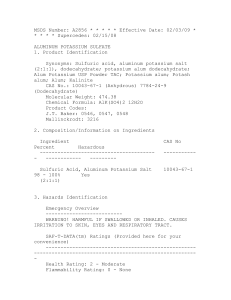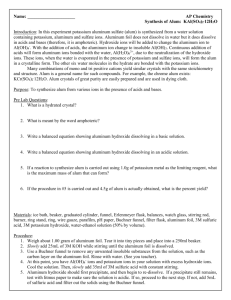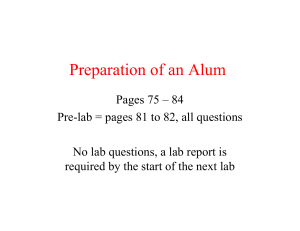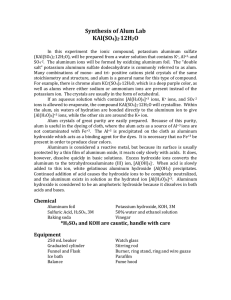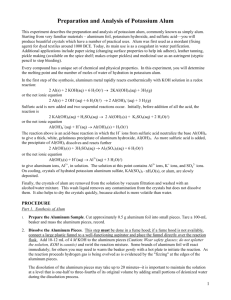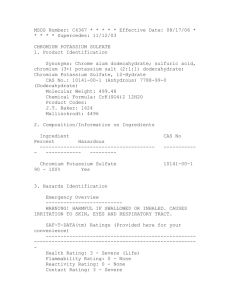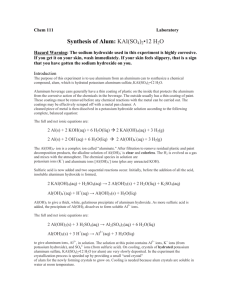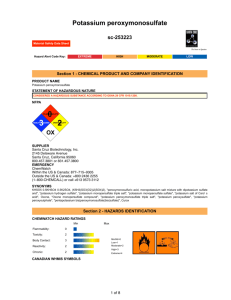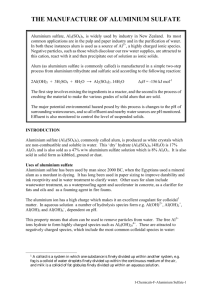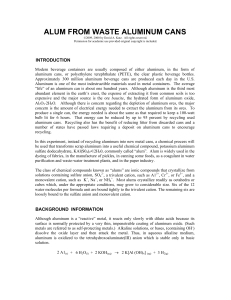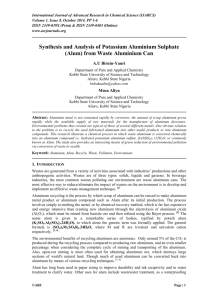Lab #1 handout
advertisement
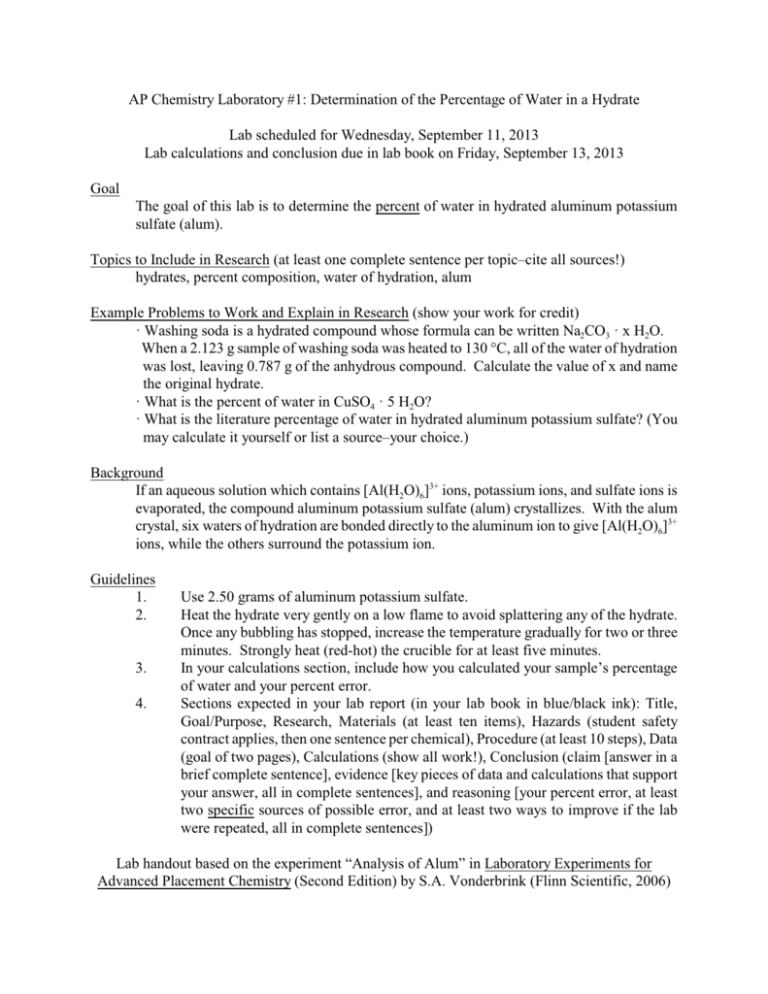
AP Chemistry Laboratory #1: Determination of the Percentage of Water in a Hydrate Lab scheduled for Wednesday, September 11, 2013 Lab calculations and conclusion due in lab book on Friday, September 13, 2013 Goal The goal of this lab is to determine the percent of water in hydrated aluminum potassium sulfate (alum). Topics to Include in Research (at least one complete sentence per topic–cite all sources!) hydrates, percent composition, water of hydration, alum Example Problems to Work and Explain in Research (show your work for credit) · Washing soda is a hydrated compound whose formula can be written Na2CO3 · x H2O. When a 2.123 g sample of washing soda was heated to 130 °C, all of the water of hydration was lost, leaving 0.787 g of the anhydrous compound. Calculate the value of x and name the original hydrate. · What is the percent of water in CuSO4 · 5 H2O? · What is the literature percentage of water in hydrated aluminum potassium sulfate? (You may calculate it yourself or list a source–your choice.) Background If an aqueous solution which contains [Al(H2O)6]3+ ions, potassium ions, and sulfate ions is evaporated, the compound aluminum potassium sulfate (alum) crystallizes. With the alum crystal, six waters of hydration are bonded directly to the aluminum ion to give [Al(H2O)6]3+ ions, while the others surround the potassium ion. Guidelines 1. 2. 3. 4. Use 2.50 grams of aluminum potassium sulfate. Heat the hydrate very gently on a low flame to avoid splattering any of the hydrate. Once any bubbling has stopped, increase the temperature gradually for two or three minutes. Strongly heat (red-hot) the crucible for at least five minutes. In your calculations section, include how you calculated your sample’s percentage of water and your percent error. Sections expected in your lab report (in your lab book in blue/black ink): Title, Goal/Purpose, Research, Materials (at least ten items), Hazards (student safety contract applies, then one sentence per chemical), Procedure (at least 10 steps), Data (goal of two pages), Calculations (show all work!), Conclusion (claim [answer in a brief complete sentence], evidence [key pieces of data and calculations that support your answer, all in complete sentences], and reasoning [your percent error, at least two specific sources of possible error, and at least two ways to improve if the lab were repeated, all in complete sentences]) Lab handout based on the experiment “Analysis of Alum” in Laboratory Experiments for Advanced Placement Chemistry (Second Edition) by S.A. Vonderbrink (Flinn Scientific, 2006)
